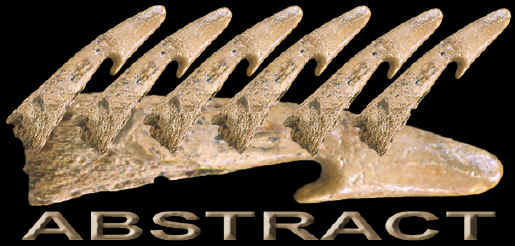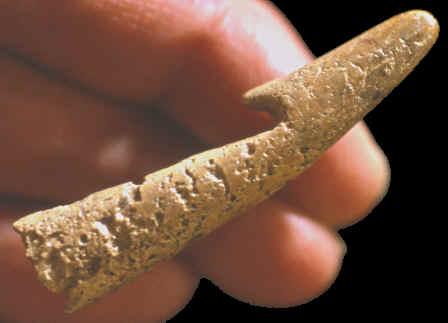|
|
|
|
|
"Barbed antler artifacts interpreted as
spear throwers are known from the Magdalenian (15,000 to 13,000 years
ago in France); these tools can increase the velocity of a propelled
spear."---1988,
Tattersal, Delson & Couvering, "The Encyclopedia of Human
Evolution and Prehistory,"
ATLATLS One of the earliest weapons invented by mankind was the spear. It was used by ancient cultures all around the world by throwing and thrusting them. They didn't achieve their maximum effectiveness until they began to be used in conjunction with spear throwers. A spear thrower produces three basic desirable effects. It considerably increases the velocity, distance and penetration of these large projectiles. |
|
|
Five or six foot spears or darts can be propelled over 100 miles per hour with a spear thrower. One record long distance throw for a spear or dart was made in 1995 by Dave Ingvall who threw one 848.56 feet which is almost the length of two football fields. Aztec warriors are reported to have thrown spears or darts completely through the Spanish armor, a feat that would have been impossible without the use of an atlatl. |
|
|
Spear throwers have been called throwers, dart throwers, spear throwers, board throwers, atlatls, nuqaqs and woomers. In Australia, they are called a woomera and in the Americas they are called an atlatl. Eskimo cultures were using atlatls when the first Europeans arrived in Alaska. In the lower Yukon they are called a nuqaq. The Aztec were using them in Mexico against Cortez. In fact, the word atlatl comes from one of languages (Nahuatl) of the Aztec. Some of the noble Aztec warriors had finely crafted atlatls that were decorated with gold (gilded). |
|
| CONTINUE ON TO PAGE TWO | |
|
"REFERENCES"
1939,
Knoblock, Byron W., "Banner-stones of the North American
Indian," pp. 148-149. |
|




